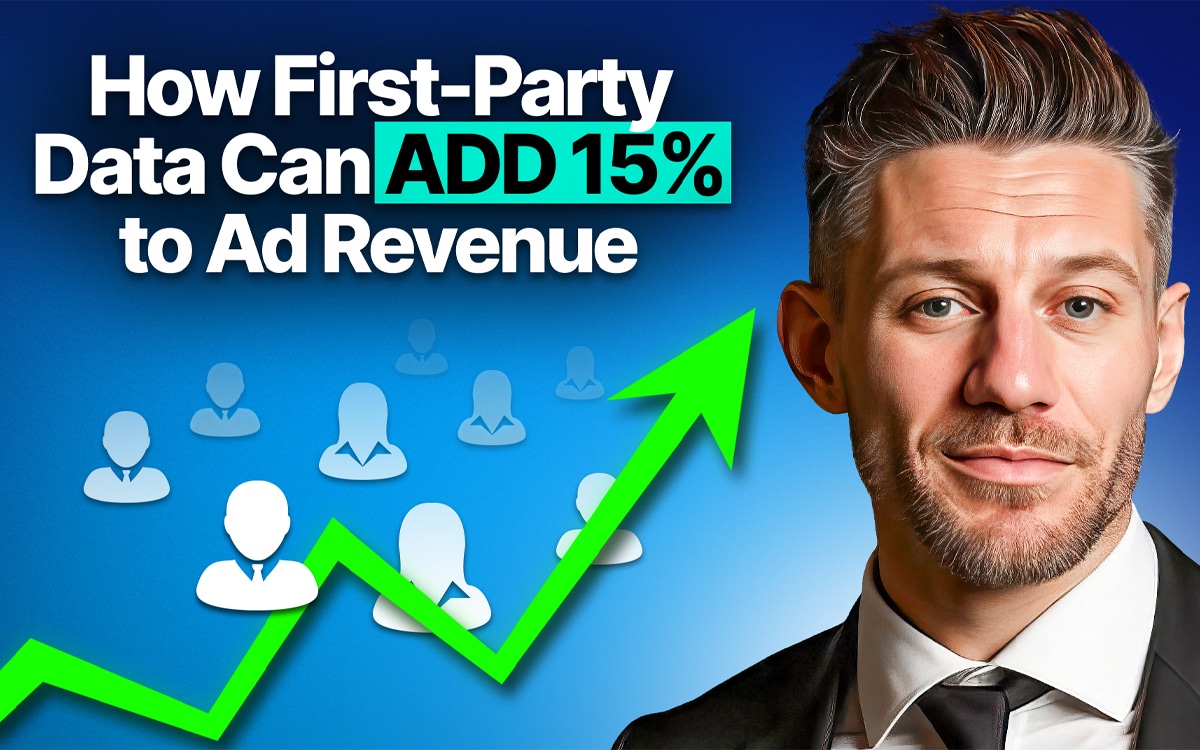Tyler Bishop Explains How First-Party Data Can Add 15% to Ad Revenue

In this week’s episode of the Niche Pursuits podcast, Tyler Bishop and I dive deep into the changing landscape of digital advertising, particularly focusing on the depreciation of third-party cookies and the growing importance of first-party data.
We explore how this shift is reshaping the ad model for publishers, especially as search and social media traffic become more challenging to rely on. Tyler walks us through the history of cookies, explains how first-party data is revolutionizing ad sales, and gives valuable insight into how publishers can leverage their own audience data to thrive in this new environment.
Watch the Full Episode
The Decline of Third-Party Cookies
Third-party cookies, once considered the gold standard for digital advertising, are being phased out. Originally, these cookies were designed to track users across the web, enabling advertisers to target specific audiences based on their browsing history.
However, as privacy concerns have grown, tech giants like Apple and Google have taken steps to block third-party cookies, leading to the eventual downfall of this tracking method.
- The shift in the ad landscape: Third-party cookies are no longer a reliable tool for tracking user behavior across the web.
- Apple’s decision to block third-party cookies: Apple’s move to block cookies on its devices was a game-changer, forcing advertisers and publishers to rethink their strategies.
- The impact on the industry: As a result, the market is seeing a splintering of responses and adaptations, with publishers needing to shift to new methods of collecting and using data.
The Rise of First-Party Data
As third-party cookies lose their effectiveness, first-party data — information directly collected from users—has emerged as a crucial asset for publishers.
Unlike third-party data, which is shared across platforms and providers, first-party data is collected by publishers themselves, often through actions like email sign-ups or form submissions. This direct connection to the audience makes it a powerful tool for targeted advertising.
- What is first-party data?: First-party data includes information like emails, phone numbers, and other personal details directly provided by the user.
- How first-party data works: By collecting and using this data, publishers can target their audience without relying on intermediaries like Google or Facebook.
- The publisher’s advantage: First-party data allows publishers to maintain control over their audience and potentially earn more from advertisers by offering a more direct line to high-quality, engaged users.
The Changing Ad Model for Publishers
With the shift from third-party cookies to first-party data, the advertising model is evolving. In the past, publishers relied on ad networks and exchanges that aggregated audience data and placed ads programmatically.
However, as advertisers begin to recognize the value of first-party data, publishers now have an opportunity to bypass intermediaries and directly sell their audience data to advertisers.

- Higher bid prices: Advertisers are willing to pay more for first-party data because it’s seen as higher quality and more targeted than third-party data.
- The value of audience control: By maintaining control over their audience, publishers can increase the value of their ad inventory, leading to higher CPMs (cost per thousand impressions).
- Creating a self-sustaining model: Publishers can use their first-party data to build a more sustainable revenue model by cutting out middlemen and working directly with advertisers.
Practical Steps for Publishers
For publishers, the transition to a first-party data-driven model may seem daunting, but it offers significant long-term benefits. The first step is to begin collecting first-party data, whether through email sign-ups, newsletter subscriptions, or creating member accounts.
While the process of setting up systems to manage and sell this data can be complex, there are tools and services available to help streamline the process.
- Start collecting first-party data: Encourage your audience to sign up for newsletters or create accounts on your site to build a list of first-party data.
- Leverage tools for easier implementation: Platforms like Ezoic’s ezID simplify the process of hashing and storing first-party data, making it easier for publishers to engage in programmatic ad sales.
- Focus on audience engagement: By building a strong relationship with your audience, you can increase their lifetime value and make your site more attractive to advertisers.
The Future of Advertising and First-Party Data
As digital advertising continues to evolve, first-party data will play an increasingly vital role in the success of publishers. With search and social media traffic becoming less predictable, publishers who focus on building and nurturing their own audience will be in a better position to thrive.
The key is to start collecting and using first-party data now, even if your list is small. Over time, as your audience grows, so will the value of the data you collect.
- The importance of starting now: The sooner publishers begin collecting first-party data, the better positioned they will be for the future.
- A shift in mindset: Publishers need to think beyond just traffic and focus on building a loyal, engaged audience that they can monetize directly.
- Adapting to change: As the advertising landscape continues to change, those who adapt to these new methods of data collection and monetization will be best equipped to succeed.
Final Thoughts
The advertising landscape is shifting, and publishers must evolve to keep pace with these changes. As third-party cookies fade away, first-party data has emerged as the key to maintaining control over an audience and boosting ad revenue.
While this transition may seem complex, the benefits far outweigh the challenges. Publishers who begin collecting and using first-party data now will be better positioned to thrive in the future, even as traffic from traditional channels like Google and social media becomes more unpredictable.
- Seize the opportunity: Now is the time to start collecting first-party data, whether through email sign-ups or creating user accounts.
- Adapting to change: Embracing these changes now will allow publishers to build a more sustainable and profitable business model.
- Future-proofing your revenue: As the ad industry shifts, those who control their own audience data will have a significant advantage over those who rely on third-party platforms.
In short, the future of digital advertising lies in the hands of publishers who are willing to adapt and leverage their own audience data. The transition may take time, but with the right strategies and tools in place, publishers can turn this challenge into an opportunity for long-term success.



